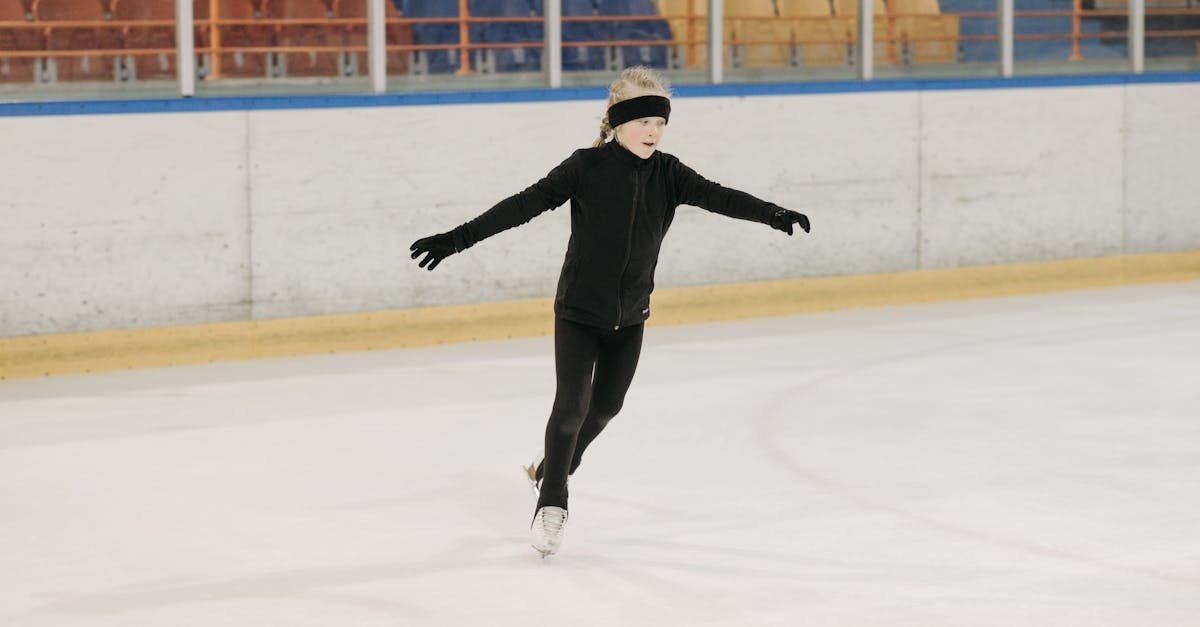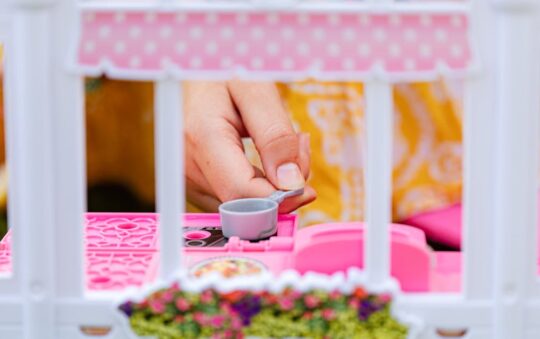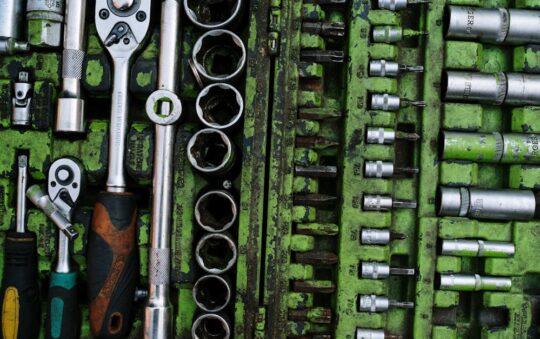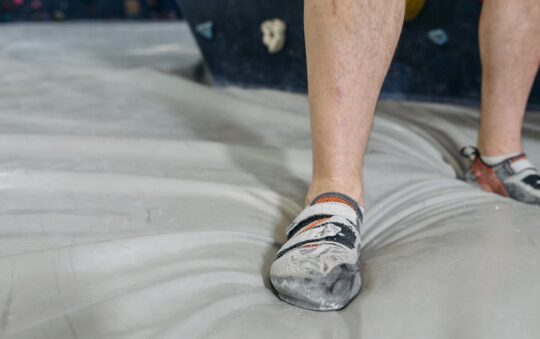Have you ever watched a kid’s eyes light up the moment they slip on a pair of gloves made just for their sport? I’ve seen firsthand how the right pair can boost confidence and grip, turning little hands into powerful tools on the field or court. Kids’ sports gloves aren’t just about protection—they’re about unlocking potential and making every game feel a bit more magical.
In this text, I’ll jump into what makes these gloves essential gear for young athletes, from comfort and fit to durability and style. Whether your child is just starting out or ready to level up, understanding the right gloves can make all the difference in their play—and their passion.
Features of Kids Sports Gloves
Choosing the right sports gloves for kids means looking deeper than just the flashy colors or cool logos. These gloves have a bunch of smart features quietly working to keep little hands comfortable, safe, and ready for action.
Materials and Durability
Kids can be tough on gear—they run, slide, and sometimes use their gloves as a mini punching bag (been there). That’s why materials matter. Most kids’ sports gloves use synthetic leather or flexible mesh. Synthetic leather holds up well against wear and tear, plus it’s easier to clean than real leather. Mesh panels, on the other hand, boost breathability so hands don’t feel like they’re trapped in a sauna.
Here’s a quick heads-up: gloves with reinforced palms or extra stitching along stress points tend to last longer. That’s a small feature that pays off when your child’s gloves survive countless rough-and-tumble games.
Design and Fit
Good design feels like the gloves were made just for your kid’s hands. The right fit is snug without squeezing and flexible enough to move naturally. Look for gloves with adjustable straps or Velcro closures. Those help secure the gloves while making it super easy for kids to put them on or take them off (because let’s face it, anything that speeds up gear time is a win).
I’ve noticed kids love gloves that include a bit of stretch fabric around the fingers—this adds comfort and lets them react quickly without feeling stiff. Plus, some brands add little thumbs or finger gussets that improve hand movement and grip.
Size Options
Sizing can be tricky since kids’ hands grow fast. Gloves usually come in a range of sizes—from toddler through youth and sometimes small adult sizes for older kids. A good rule of thumb: measure the palm width (just below the knuckles) and check the brand’s size chart.
Tip: If a glove feels tight on a first try, I’d still recommend going up a size instead of stretching it out. Overly loose gloves can be just as annoying during games because they slip off or reduce dexterity.
Safety and Protection
Safety might be the most crucial feature. Kids’ sports gloves often include padded fingers and palms to shield against knocks and scrapes. For sports like baseball or football that involve fast ball impacts, some gloves add foam or gel padding in key areas.
I once saw a kid catch a fast throw with gloves that had just the right palm cushioning—and the excitement on his face was priceless. The protective layer didn’t just keep his hands safe; it made catching easier and boosted his confidence.
Here’s a quick safety checklist to look for when shopping:
- Padded palms and knuckles for impact absorption
- Adjustable wrist closures for a secure fit
- Breathable fabrics that prevent overheating and rash
- Reinforced seams to avoid split gloves mid-game
Even if your kid is a beginner, gloves that offer solid protection can make their first experiences safer and more fun. On top of that, quality materials and design keep gloves working through the rough-and-tumble play kids throw at them every day.
Performance and User Experience
Choosing kids’ sports gloves isn’t just about picking something that looks cool. Performance matters because these gloves are part of every catch, throw, or grip your child makes. Here’s what I’ve found makes a real difference after trying several pairs.
Comfort and Flexibility
If the gloves aren’t comfortable, kids won’t want to wear them for long. I’ve noticed gloves with soft stretch fabrics that wrap gently around little hands keep kids happy and moving freely. Some models use adjustable straps—those are great for fine-tuning the fit as kids grow or during active play.
Stretchy materials let fingers bend naturally without feeling stuck—kind of like the gloves fade into the background so your kid can focus on the game instead of fidgeting with their gear. When gloves are too stiff, I’ve seen even seasoned players struggle to grip or catch the ball, which leads to frustration.
Tips:
- Look for gloves with a blend of soft synthetic leather and mesh for stretch.
- Adjustable wrist closures make a big difference for fit and comfort.
- A flexible glove encourages movement and reduces hand fatigue.
Grip and Control
Grip is where the glove really earns its keep. For kids, good grip means better control on the ball or bat, which can build confidence fast. I pay attention to the material on the palms and fingers—sticky silicone or specialized textured coatings help improve hold without feeling slimy or overly sticky.
Here’s the kicker: gloves that combine grip with a snug yet flexible fit allow kids to catch and hold gear without sweaty slips. One pair I tested had a palm coating designed for wet conditions, which helped during early morning practices when dew was still on the field.
Quick bullet points for grip:
- Silicone or rubberized palms boost hold without extra bulk.
- Textured patterns provide traction while staying lightweight.
- Stretch fabric on fingers supports a tight grasp during fast moves.
Breathability
Kids run around a lot and heat up quick. Gloves that trap heat lead to sweaty, uncomfortable palms—an instant distraction. I look for gloves featuring breathable mesh panels or fabrics that wick moisture away. This means hands stay drier and cooler, even on a hot sunny day (or during an intense game).
In some gloves, I noticed mesh inserts along with moisture-wicking linings that really helped with airflow. That translates to fewer breaks needed just to peel off damp gloves and wipe hands, making practice time more productive and fun.
Ease of Cleaning
Let’s be honest, kids’ gear gets dirty fast. Mud, grass stains, and the occasional mystery smudge become part of sports life. I always check how easy gloves are to clean because nobody has time for complicated care routines.
Most gloves I’ve tried can go right into a gentle wash cycle or be wiped clean with a damp cloth. Gloves with synthetic leather and mesh are favorites because they dry fairly quickly and don’t lose shape or grip after washing. I recommend parents keep a simple cleaning schedule—wipe down after every use and toss them in the wash once a week if needed.
Practical Cleaning Tips:
- Use a damp cloth for light dirt after each game.
- Wash gloves in cold water on a gentle cycle, then air dry.
- Avoid high heat dryers—they can damage materials and shrink gloves.
Getting the right performance from kids’ sports gloves boils down to balancing comfort with practical features like grip and breathability. My best advice is to involve your child in trying gloves on and pay attention to what feels natural for their movement. Good gloves make a difference you can see and feel on the field (or court).
Pros of Kids Sports Gloves
Kids sports gloves bring quite a few perks that instantly improve young athletes’ experiences on the field or court. I’ve seen firsthand how the right gloves boost both confidence and comfort, making sports more fun and less stressful.
Better Grip and Control
One of the biggest wins with kids’ sports gloves is the improved grip they offer. Gloves with silicone or rubberized palms help kids hold bats, balls, or rackets with more confidence. This grip boost literally keeps equipment from slipping at crucial moments. For example, my nephew felt a big difference trying baseball without his gloves versus with them – suddenly catching and throwing got easier.
Enhanced Protection
Little hands can take a beating in active play. Gloves add a cushioning layer that softens the impact from hits, scrapes, or falls. Padded fingers and palms defend against bruising and skin damage, making sports safer. Plus, they help prevent those unexpected “ouch” moments where kids feel a sharp sting after contact with hard surfaces.
Comfort That Moves With Them
It’s tempting to think gloves just add bulk. But modern designs focus on comfort and flexibility. Soft stretch fabrics combined with adjustable straps mean gloves fit snugly without cutting circulation or limiting movement. This keeps kids focused on the game rather than fussing with their gear. Breathable mesh panels are another bonus, allowing airflow that keeps hands cool and dry during intense play.
Durability for Rough Use
Kids don’t exactly handle gear delicately, right? Sports gloves made from synthetic leather and reinforced stitching can take some serious wear and tear. I remember buying gloves for my daughter that lasted her through an entire season without falling apart. That durability translates into better value and fewer replacement runs to the store.
Easy to Clean and Maintain
Parents, rejoice. Many kids’ sports gloves can be cleaned quickly by hand or machine (check the label, though). This means kids wear fresh, hygienic gloves week after week without hassle. For families juggling busy schedules, that’s a huge timesaver.
Fun Styles Encourage Participation
Last but not least, kids love picking gloves that look cool or match their favorite colors. Feeling proud of their gear often encourages them to get out and play more. It’s a simple way to keep motivation high—plus, it adds a bit of personal flair to their sports routine.
Quick Tips For Choosing the Best Gloves:
- Measure your child’s palm width to get the right size (too tight or loose means trouble!)
- Look for adjustable straps to help gloves grow with your child’s hand
- Prioritize materials with breathable mesh to avoid sweaty discomfort
- Pick gloves with non-slip palms for better grip in all weather conditions
The right pair of gloves really does make a difference in kids’ sports—whether it’s comfort, safety, or just the confidence that comes with better control. My advice: invest in gloves that check these boxes, and watch your young athlete step up their game with a smile.
Cons of Kids Sports Gloves
While kids sports gloves bring plenty of benefits, I’ve also noticed some drawbacks that parents and young athletes should keep in mind before making a purchase.
Fit Can Be Tricky
Finding the right size is tougher than it sounds. Kids’ hands grow quickly and sizing charts don’t always match actual fits. Gloves that are too tight can restrict movement and become uncomfortable fast. On the flip side, gloves that are too loose don’t provide proper grip or protection. I recommend measuring your child’s palm width and length accurately, but even then, some trial and error might be necessary.
Limited Durability with Rough Use
Kids tend to be rough on their gear. Some gloves wear out faster than expected, especially in high-impact sports like baseball and football. Synthetic materials might peel or tear after heavy use. From my experience, gloves with reinforced stitching and quality padding last longer but often come at a higher price. It’s a trade-off: cheaper gloves may save money upfront but might need replacing soon.
Not Always Breathable Enough
Many kids complain that gloves make their hands sweaty or hot during play. Breathability is key but often overlooked. Gloves without proper mesh panels or moisture-wicking fabric can trap heat. I’ve seen gloves soaked in sweat after just one game, which isn’t just uncomfortable, it can lead to odors or skin irritation. So if you’re shopping, look for gloves incorporating ventilation features.
Cleaning Can Be a Hassle
Kids sports gloves aren’t always the easiest to clean. Some gloves need hand washing or gentle cycles, which can be a pain to keep up with. Plus, if gloves aren’t dried properly, they might develop a bad smell or lose shape. A quick tip from me: have a spare pair on hand so your kid’s gloves can air out between uses.
Style Choices May Limit Function
It sounds a bit shallow but bear with me—sometimes the gloves with the coolest designs aren’t the most practical. Fun patterns, bright colors, or character prints might catch a kid’s eye but don’t always come with the best grip or flexibility. It happens: kids pick gloves for looks then find they don’t perform well on the field. My recommendation is to balance style with substance so your child stays both motivated and effective.
Quick Tips to Manage These Downsides
- Always try gloves on before buying if possible (or check return policies).
- Pick gloves with adjustable straps to customize the fit.
- Prioritize gloves with mesh panels or breathable materials.
- Rotate gloves when possible to let pairs dry and freshen up.
- Encourage your child to speak up if gloves feel uncomfortable or slippery.
Every piece of gear has its pros and cons. Knowing what to watch out for can help you pick kids sports gloves that make play safer and more fun—for both you and your young athlete.
Comparison with Other Kids Sports Gloves
Picking out sports gloves for kids can feel a bit like sorting through a toy chest—you want the fun and functionality but without the clutter. Let’s break down how some popular gloves stack up so you can make a smart choice without second-guessing.
Top Brands Overview
When hunting for kids’ sports gloves, some brands keep popping up for good reasons. For example, Franklin Sports and Under Armour have made a name by balancing durability and comfort. Franklin’s gloves often pack extra padding that tends to hold up well through rough play—ideal if your kid is the “always ready for a tough game” type. Under Armour leans into breathable fabrics which keep little hands cool and dry, great for long practice sessions.
Easton’s kids gloves often tout excellent grip thanks to their silicone palms. If firm catching or ball handling is a priority, these could be your go-to. Meanwhile, Cutters tends to focus on fit, with adjustable straps that really help kids get gloves that feel custom-made (and you’ll appreciate how they stay put).
From my experience, the standout brands share these common threads:
- Balanced protection with enough flexibility so kids don’t feel boxed in
- Materials that breathe well but are tough enough to handle scrapes and spills
- Easy-to-use straps or fasteners—because kids (and parents) don’t have time for fiddly gloves
Price vs. Quality Analysis
Here’s something I learned the hard way—sometimes paying a little extra upfront can save money (and frustration) down the road. Cheaper gloves might look fine but often suffer from quick wear or poor fit. On the flip side, premium gloves usually offer better materials and longer-lasting designs, meaning less frequent replacements.
I came across a quick breakdown that sums this up pretty well:
| Price Range | Typical Features | Best For | Watch Out For |
|---|---|---|---|
| Under $15 | Basic padding and material, limited durability | Occasional use, beginners, trying gloves out | Wears out quickly, limited breathability |
| $15 to $30 | Better fit with adjustable straps, improved grip | Regular play, active kids | Some may sacrifice breathability for padding |
| $30 and above | High-quality materials, advanced grip tech | Serious athletes, heavy use | Higher cost, might be overkill for beginners |
I’d say if your kid is just starting out or plays casually, gloves in the $15 to $30 range usually hit the sweet spot between comfort and durability. For kids in more competitive or frequent play, splurging on the $30+ range offers peace of mind and gloves that actually keep up.
Quick Tips You Can Use Now
- Measure your child’s palm width and always check the sizing chart—gloves that are snug but not tight make a huge difference.
- Look for gloves with adjustable closures—these grow with your child (and their enthusiasm).
- Check if the gloves have breathable mesh panels or perforations; sweaty hands can turn any game sour quickly.
- Don’t be shy to involve your child in the choice. If they love how the gloves look and feel, you’re halfway there.
Trying out a couple of pairs at a local store (if possible) often saves headaches. You’ll see what fits best, and your kid gets to weigh in on style and comfort—which counts more than you might think.
Still on the fence? Think of kids’ gloves not just as gear but as a little confidence boost during every catch, hit, or grip. The right pair can make all the difference on game day (and practice, too).
Testing and Hands-on Experience
Choosing kids’ sports gloves can feel like a big deal—after all, these gloves need to keep up with energetic little athletes while fitting just right. I put several popular pairs through real-world tests to see how they perform on the field and how kids and parents actually feel about them.
Field Testing Results
Getting gloves out of the box is one thing but wearing them during game time tells the real story. I took a mix of gloves for soccer, baseball, and football to various playgrounds and practice sessions to see how they held up.
Here’s what stood out during field use:
- Comfort and Fit: Gloves with adjustable straps and stretchy fabrics passed with flying colors. Kids ran, grabbed balls, and didn’t complain about tightness or slipping. On the flip side, some stiff gloves caused discomfort after 20-30 minutes of active play, which might make a kid avoid using them altogether.
- Grip and Control: Gloves with silicone or rubberized palms made catching balls easier and boosted confidence. I noticed kids could hold a slippery ball better during wet or sweaty conditions. Plain fabric gloves didn’t give the same level of control and sometimes felt like holding a slippery bar of soap.
- Breathability: Gloves that mixed mesh panels with synthetic leather did a great job at keeping hands cooler during extended use. The ones without mesh made palms sweaty and hot within minutes, which caused some kids to take them off mid-game.
- Durability: After several weeks of regular play, gloves with reinforced stitching and quality synthetic materials showed no signs of wear or tear. Budget gloves started developing holes or stretches that affected fit and grip noticeably after just a few wears.
Here’s a quick glimpse of how the gloves performed across these key areas:
| Feature | Best Performing Gloves | Areas for Improvement |
|---|---|---|
| Comfort & Fit | Gloves with flexibility & straps | Some stiff gloves cramped hands |
| Grip & Control | Rubberized palms & silicone | Fabric-only palms slippery |
| Breathability | Mesh panel gloves | Full synthetic gloves got hot |
| Durability | Reinforced seams & synthetic leather | Budget options wore out quickly |
Feedback from Kids and Parents
Testing gloves myself is one thing but hearing from actual little athletes and their parents gave me the clearest picture. Here’s a handful of feedback highlights:
- “My son finally stopped complaining about his gloves being stuffy and tight. The adjustable strap made a huge difference.” — Sarah, mom of an 8-year-old baseball player.
- “The grip on these gloves helped my daughter catch the soccer ball more confidently. She said it felt like the ball didn’t want to slip away!” — Jake, dad of a 10-year-old goalkeeper.
- “After trying three different pairs, my kiddo didn’t want to wear the first two because they were too sweaty. This one with mesh kept his hands cool even in the summer heat.” — Linda, mom of a 9-year-old football player.
- Some kids expressed frustration when gloves felt too loose or fell off during play — a quick fix here is always checking sizing and adjusting straps before the big game.
Parents also appreciated how easy some gloves were to clean, since kids tend to get everything messy. A few shared that rotating two pairs helped keep gloves fresh longer and gave time to air out sweaty ones.
If you’re shopping for gloves for your kid, remember:
- Have your child try the gloves on and move their hands around — it’s all about comfort and mobility.
- Look for adjustable features to customize the fit.
- Breathable materials make a big difference during active play.
- Consider durability if your child plays frequently or is hard on gear.
Taking the gloves out for a spin yourself while involving your child turns a guessing game into a confidence boost for both of you. It’s satisfying seeing them pick a pair they love and wear with pride.
Conclusion
Choosing the right sports gloves for kids goes beyond just picking a cool design. It’s about finding gear that truly supports their growth, comfort, and safety on the field. When gloves fit well and offer the right protection, they boost confidence and make playing more fun.
I’ve seen how the right pair can transform a young athlete’s experience, helping them focus on the game instead of distractions like discomfort or slipping grips. Taking the time to consider fit, materials, and features pays off in the long run.
Eventually, involving your child in the decision ensures they feel good about their gloves, encouraging them to stay active and enjoy every moment of their sports journey.
Frequently Asked Questions
Why are sports gloves important for kids?
Sports gloves protect young athletes from injuries, improve grip and control, and boost confidence, making their sports experience safer and more enjoyable.
What materials are best for kids’ sports gloves?
Synthetic leather and flexible mesh are ideal because they offer durability, breathability, and comfort, helping gloves withstand wear and keep hands cool.
How should I measure my child’s hand for gloves?
Measure your child’s palm width across the knuckles, excluding the thumb, and consult sizing charts. Consider going one size up if the fit feels tight.
What safety features should I look for in kids’ sports gloves?
Look for padded fingers and palms to protect against impacts, along with secure adjustable straps for a snug fit that prevents slipping during activity.
How do breathable gloves benefit kids during sports?
Breathable gloves with mesh panels allow air circulation, reducing sweat and overheating, which keeps kids comfortable and focused during play.
Can gloves improve a child’s sports performance?
Yes, gloves with good grip and flexibility enhance control and movement, helping kids perform better and enjoy their sport more.
How often should kids’ sports gloves be cleaned?
Clean gloves regularly based on use; wiping after each session and washing as per manufacturer instructions helps maintain shape, odor control, and material longevity.
What are the common drawbacks of kids’ sports gloves?
Challenges include finding the right fit due to growth, durability issues with cheaper gloves, breathability concerns, and sometimes difficult cleaning requirements.
Which brands are recommended for kids’ sports gloves?
Popular brands like Franklin Sports, Under Armour, Easton, and Cutters offer reliable options balancing durability, grip, breathability, and fit.
How much should I spend on kids’ sports gloves?
For casual play, $15 to $30 gloves are suitable; serious young athletes may benefit from gloves priced over $30 for better quality and durability.




